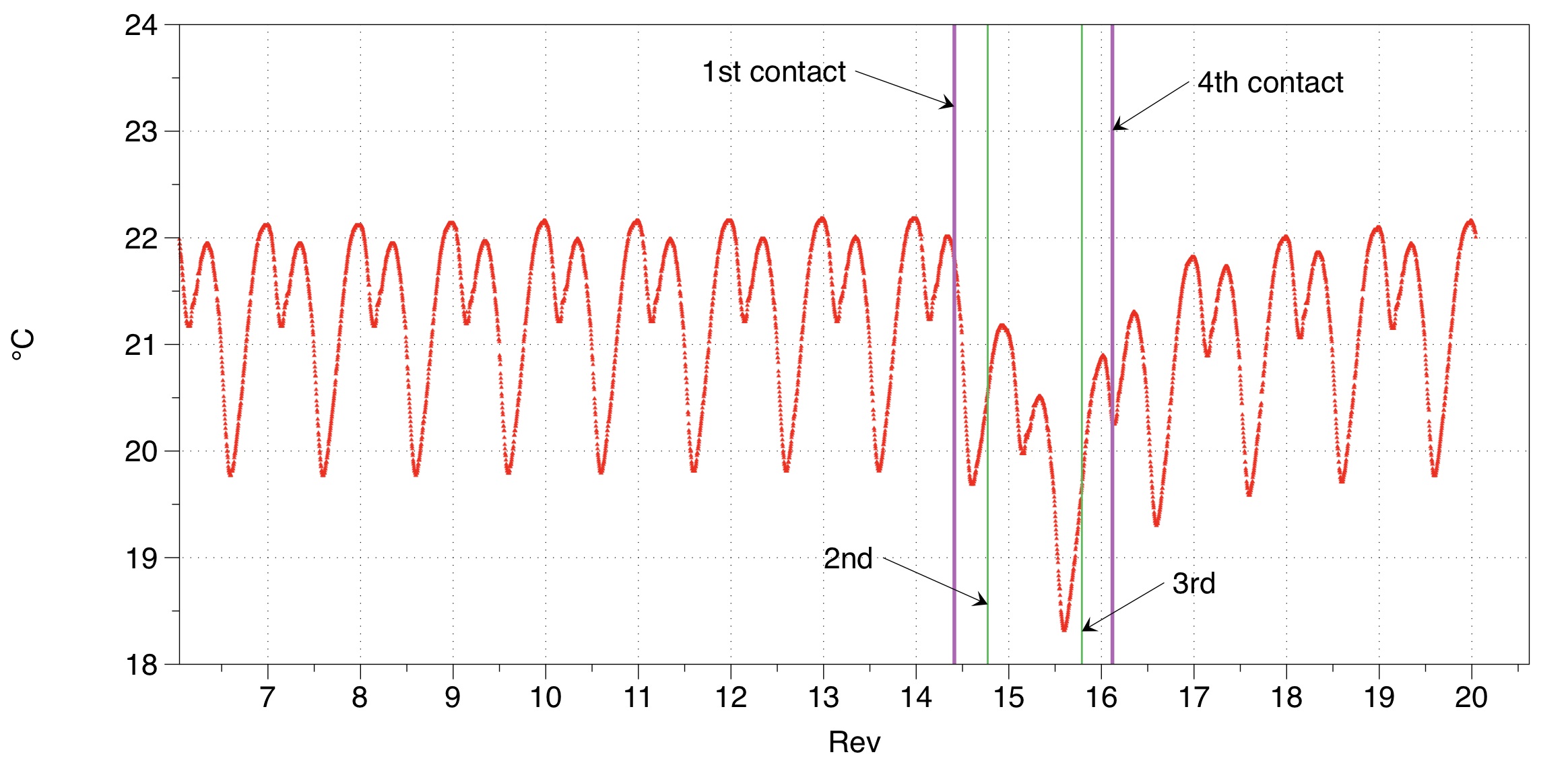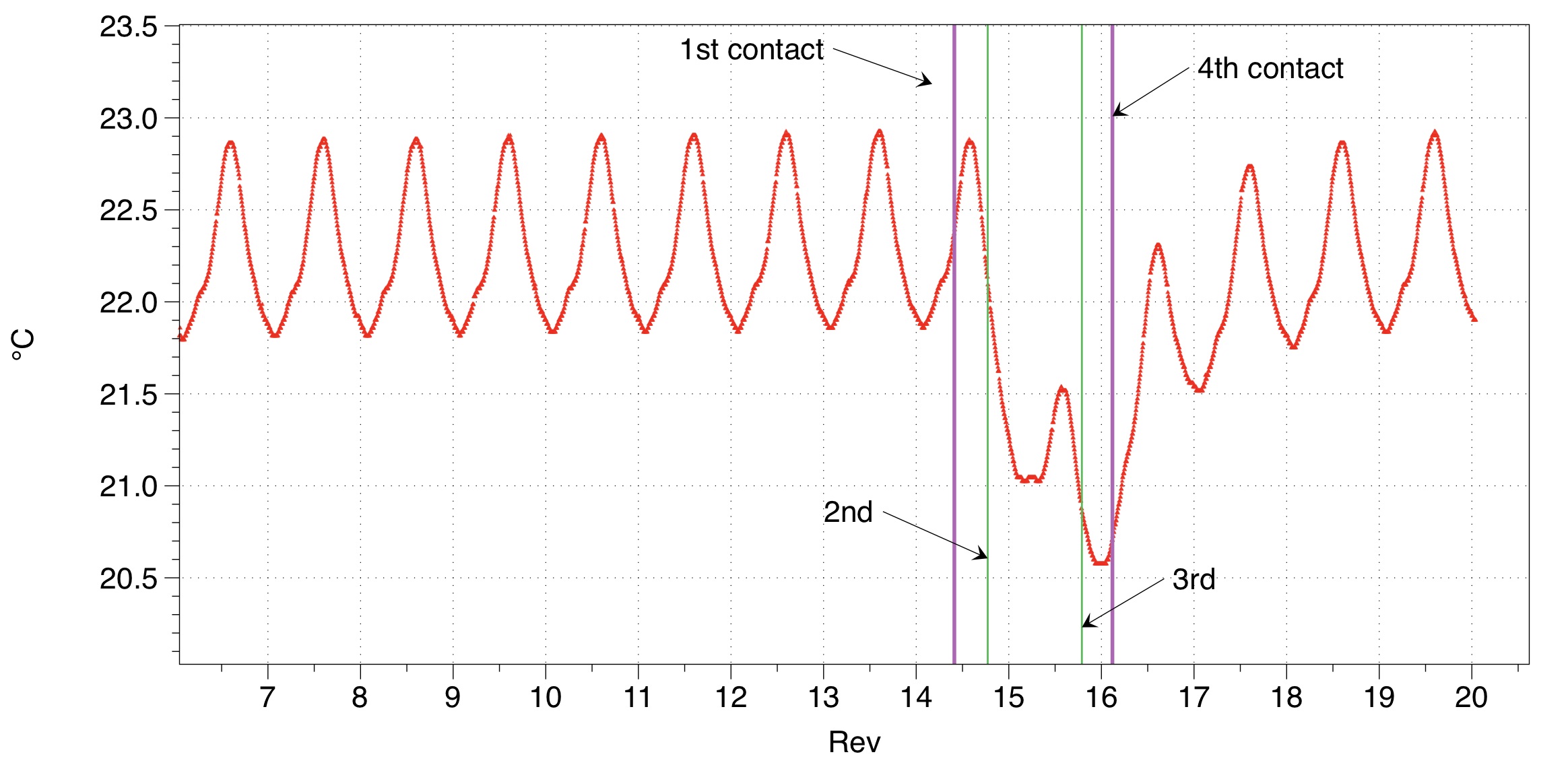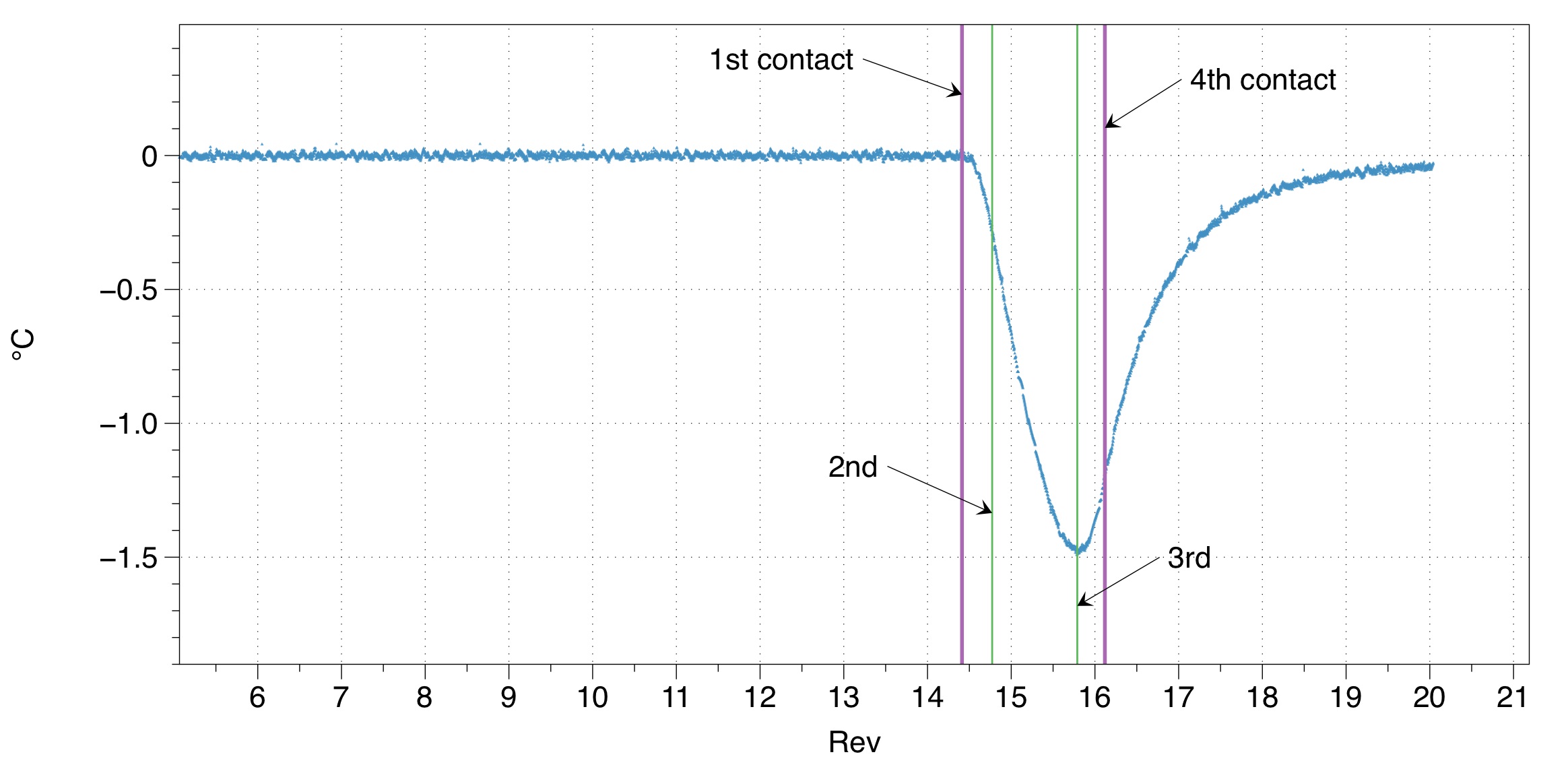IoW_20151106b - Gaia
Image of the Week |
|||
Lunar transit Temperature plots |
|||
| The plots below show the temperature variations during the lunar transit on 6 November 2015, measured by two Gaia thermal probes located in non-insulated areas of the spacecraft. The probes are situated close to the Phased-Array Antenna at the bottom of the spacecraft and inside the spacecraft's Service Module. | |||
| Plots with temperature records | |||
 |
|||
 |
|||
|
The plots show temperatures charted on-board of Gaia before, during and after the transit of the Moon across the solar disk. The time is measured in Gaia revolutions of 6 hours with an arbitrary origin (about 4 days before the transit). In a normal situation the temperature oscillates with a 6 hour period due to the change of orientation of the spacecraft with respect to the Sun, the only source of heat. The oscillations are very regular and reproduce identically over a long period, with a trend (not visible here) due to the annual change of distance between Gaia and the Sun. |
|||
| Plots with cleaned records | |||
 |
|||
 |
|||
|
In these plots the oscillations have been removed by extrapolating the steady oscillations seen before the transit. The remaining temperature is plotted as a function of time expressed in Gaia revolutions. One clearly sees that the temperature is dropping almost immediately as soon as the Moon enters the solar disk, indicating that there is no thermal inertia in these non-insulated locations. The drop reached 1.5°C as it was predicted from the annual change of the equilibrium temperature and for a flux drop of 5%. The small remaining wiggles before the event are the residuals between the oscillations and the mathematical model used to remove the regular changes. The shape of the curve is not symmetrical with respect to its lowest point, a feature not yet understood. Due to insulation these temperature variations in the payload module are so small that they cannot be measured with the accuracy of the thermistor readout electronics. However, the astrometric daily analysis shows a change in the so called geometric calibration. This is an indication that tiny changes in the payload module took place during the eclipse event as expected. Nevertheless, by applying the daily geometric calibration it is possible to verify that the astrometric quality of the measurements did not degrade during the eclipse. |
|||
|
Acknowledgement: these plots were prepared by François Mignard, Observatoire de la Côte d'Azur, Nice, and José Hernández, Gaia Operational Data & Calibration Engineer at ESA's European Space Astronomy Centre in Villanueva de la Cañada, Madrid, Spain. |
|||
|
[Published: 11/11/2015] |
|||
| Read the article "Gaia's sensors scan a lunar transit" here. |
- Removed a total of (7) style text-align:center;
- Removed a total of (4) style text-align:justify;
- Removed a total of (1) border attribute.
- Removed a total of (1) cellpadding attribute.
- Removed a total of (1) cellspacing attribute.
Image of the Week Archive
- Removed a total of (1) border attribute.
- Removed a total of (1) cellpadding attribute.
- Removed a total of (1) cellspacing attribute.








































 Sign in
Sign in
 Science & Technology
Science & Technology
